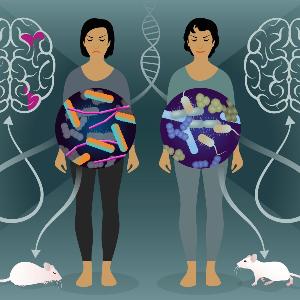2025-05-07 ミュンヘン大学(LMU)

In the twin study, researchers successfully characterized gut bacteria involved in multiple sclerosis and provided evidence of their pathogenicity. | © MPI für biologische Intelligenz / Julia Kuhl
<関連情報>
- https://www.lmu.de/en/newsroom/news-overview/news/multiple-sclerosis-triggers-in-the-gut-flora.html
- https://www.pnas.org/doi/10.1073/pnas.2419689122
多発性硬化症と腸内細菌叢:MS双生児の回腸由来のラクノスピラ科細菌が無菌トランスジェニックマウスにMS様疾患を引き起こす ― 偏りのない機能研究 Multiple sclerosis and gut microbiota: Lachnospiraceae from the ileum of MS twins trigger MS-like disease in germfree transgenic mice—An unbiased functional study
Hongsup Yoon, Lisa Ann Gerdes, Florian Beigel, +9 , and Anneli Peters
Proceedings of the National Academy of Sciences Published:April 21, 2025
DOI:https://doi.org/10.1073/pnas.2419689122
Significance
We developed a strategy to identify gut bacteria functionally linked to the development of multiple sclerosis (MS). To minimize confounders, we analyzed microbiota composition in a large cohort of monozygotic twins discordant for MS and identified over 50 differently abundant taxa. We then sampled microbiota from the ileum of selected twins, and, in order to functionally characterize them, we introduced them into germfree TCR-transgenic mice prone to develop MS-like disease upon bacterial colonization. We found that MS-derived ileal microbiota induced disease at higher rates than analogous material from healthy twin donors. Our results implicate two Lachnospiraceae members, namely Eisenbergiella tayi and Lachnoclostridium, as likely responsible for an increased incidence of disease.
Abstract
We developed a two-tiered strategy aiming to identify gut bacteria functionally linked to the development of multiple sclerosis (MS). First, we compared gut microbial profiles in a cohort of 81 monozygotic twins discordant for MS. This approach allowed to minimize confounding effects by genetic and early environmental factors and identified over 50 differently abundant taxa with the majority of increased taxa within the Firmicutes. These included taxa previously described to be associated with MS (Anaerotruncus colihominis and Eisenbergiella tayi), along with newly identified taxa, such as Copromonas and Acutalibacter. Second, we interrogated the intestinal habitat and functional impact of individual taxa on the development of MS-like disease. In an exploratory approach, we enteroscopically sampled microbiota from different gut segments of selected twin pairs and compared their compositional profiles. To assess their functional potential, samples were orally transferred into germfree transgenic mice prone to develop spontaneous MS-like experimental autoimmune encephalomyelitis (EAE) upon bacterial colonization. We found that MS-derived ileal microbiota induced EAE at substantially higher rates than analogous material from healthy twin donors. Furthermore, female mice were more susceptible to disease development than males. The likely active organisms were identified as Eisenbergiella tayi and Lachnoclostridium, members of the Lachnospiraceae family. Our results identify potentially disease-facilitating bacteria sampled from the ileum of MS affected twins. The experimental strategy may pave the way to functionally understand the role of gut microbiota in initiation of MS.


